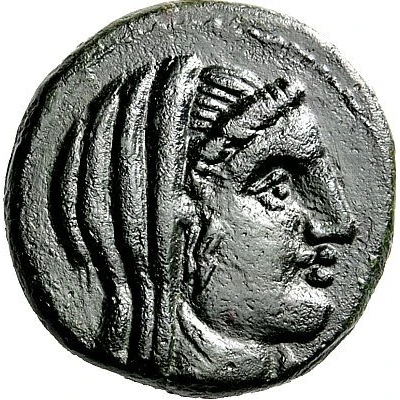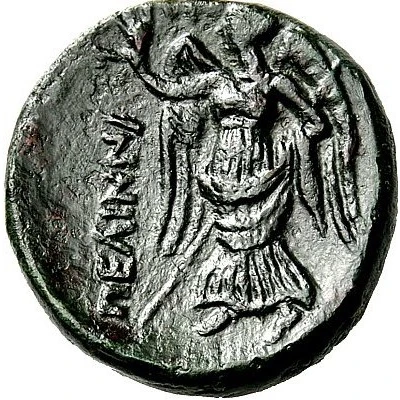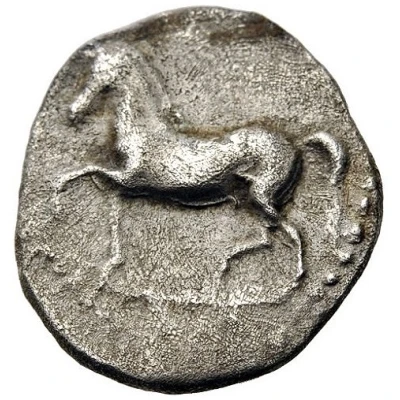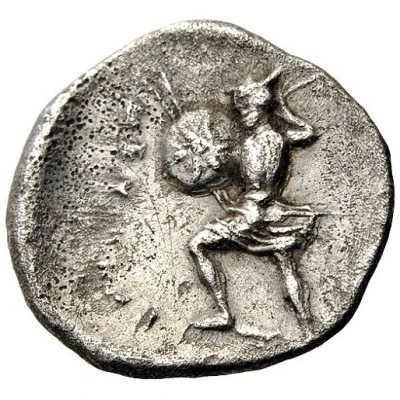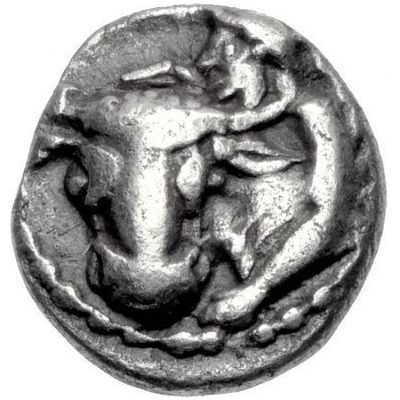
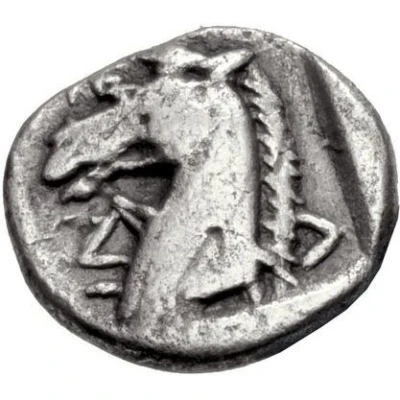

© Classical Numismatic Group, Inc.
Obol 460 BC - 440 BC
| Silver | 1.0 g | 9.5 mm |
| Issuer | Pelinna (Thessaly) |
|---|---|
| Type | Standard circulation coin |
| Years | 460 BC - 440 BC |
| Value | Obol (⅙) |
| Currency | Drachm |
| Composition | Silver |
| Weight | 1.0 g |
| Diameter | 9.5 mm |
| Shape | Round (irregular) |
| Technique | Hammered, Incuse |
| Demonetized | Yes |
| Updated | 2024-10-10 |
| Numista | N#317305 |
|---|---|
| Rarity index | 100% |
Reverse
Bridled horse’s head and neck left, in incuse square.
Script: Greek
Lettering: ΠEΛIN
Translation: The Pelinnaeians
Interesting fact
The Obol coin from Pelinna (Thessaly) was used as a form of currency in ancient Greece during the 5th century BC. It was made of silver and weighed approximately 1.0 gram. Despite its small size, the Obol was an important coin in ancient Greece, as it was widely used for trade and commerce. In fact, the Obol was the standard unit of currency in many city-states in ancient Greece, including Athens. Interestingly, the Obol coin from Pelinna (Thessaly) features an image of a mythical creature called the "Chimera" on one side, and an image of the Greek goddess Athena on the other. The Chimera was a mythical creature that was depicted as a lion-goat-serpent hybrid, and it was said to be a powerful and fearsome creature in ancient Greek mythology. The image of the Chimera on the Obol coin from Pelinna (Thessaly) is a testament to the rich cultural heritage of ancient Greece and its fascination with mythology and symbolism.
